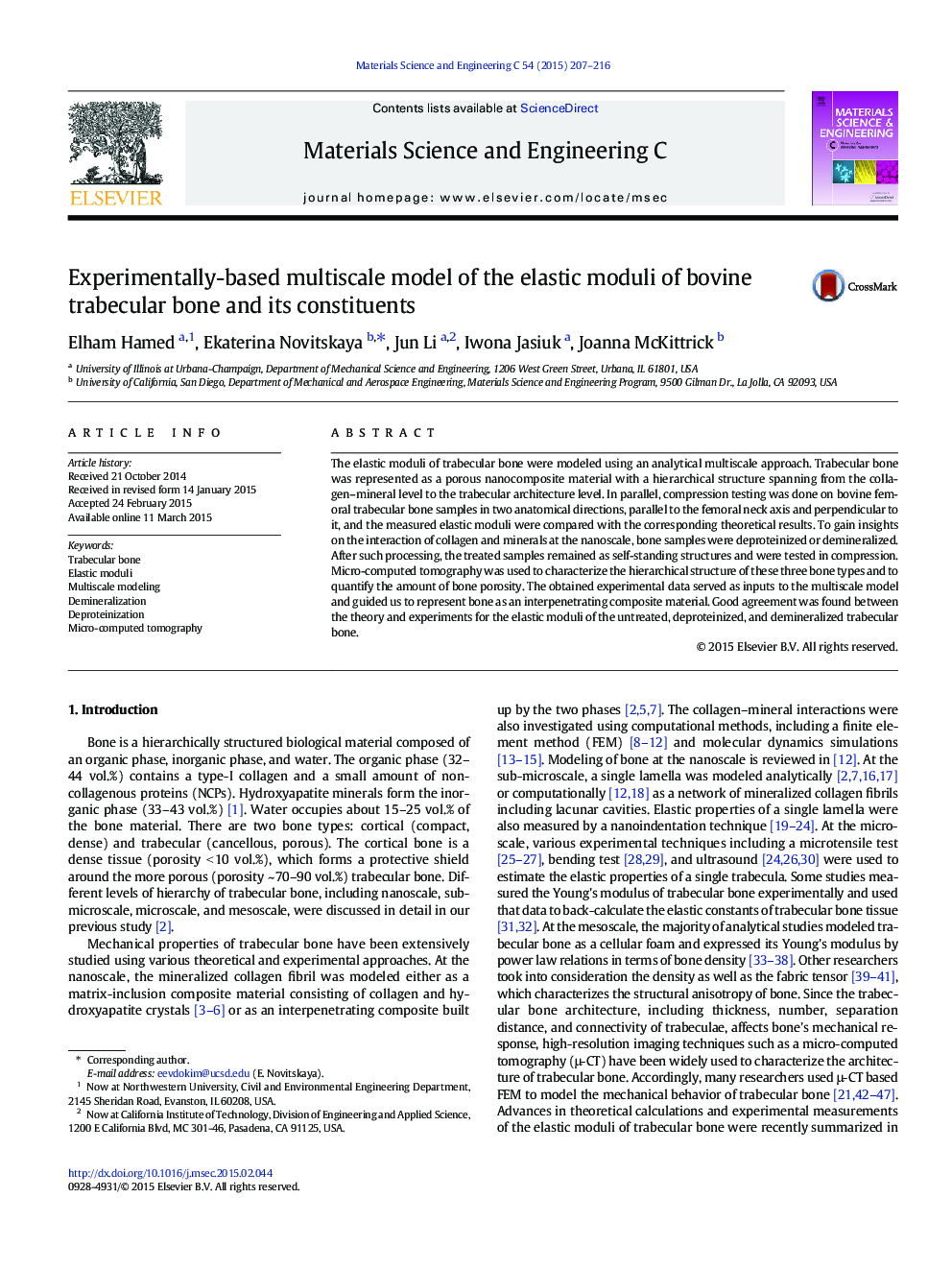| کد مقاله | کد نشریه | سال انتشار | مقاله انگلیسی | نسخه تمام متن |
|---|---|---|---|---|
| 1428139 | 1509167 | 2015 | 10 صفحه PDF | دانلود رایگان |
• A multiscale model was used to predict the elastic moduli of trabecular bone.
• Samples included demineralized, deproteinized and untreated bone.
• The model portrays bone as a porous, interpenetrating two phase composite.
• The experimental elastic moduli for trabecular bone fell between theoretical bounds.
The elastic moduli of trabecular bone were modeled using an analytical multiscale approach. Trabecular bone was represented as a porous nanocomposite material with a hierarchical structure spanning from the collagen–mineral level to the trabecular architecture level. In parallel, compression testing was done on bovine femoral trabecular bone samples in two anatomical directions, parallel to the femoral neck axis and perpendicular to it, and the measured elastic moduli were compared with the corresponding theoretical results. To gain insights on the interaction of collagen and minerals at the nanoscale, bone samples were deproteinized or demineralized. After such processing, the treated samples remained as self-standing structures and were tested in compression. Micro-computed tomography was used to characterize the hierarchical structure of these three bone types and to quantify the amount of bone porosity. The obtained experimental data served as inputs to the multiscale model and guided us to represent bone as an interpenetrating composite material. Good agreement was found between the theory and experiments for the elastic moduli of the untreated, deproteinized, and demineralized trabecular bone.
Journal: Materials Science and Engineering: C - Volume 54, 1 September 2015, Pages 207–216
